Premium Only Content
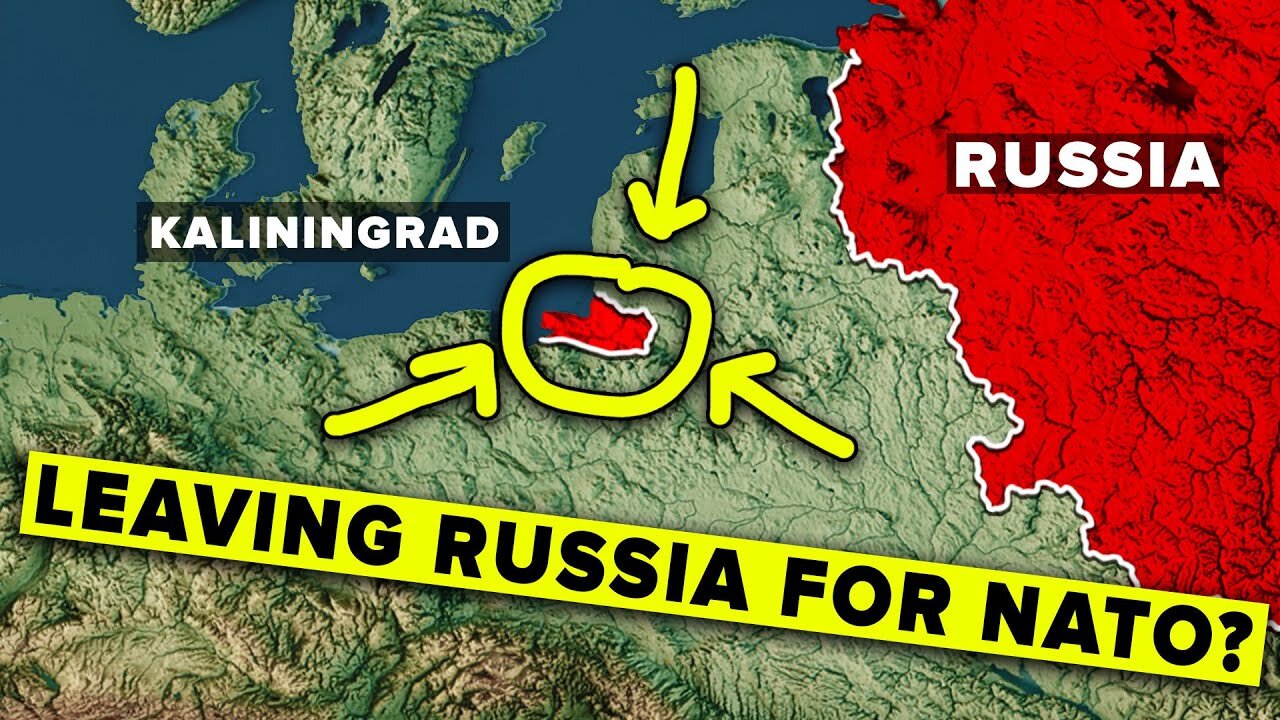
Why Kaliningrad Will be Ukraine 2.0
#themilitaryshow #Lithuania #Ukraine
To the outside world, Kaliningrad is simply a part of Russia 🌍. But change is brewing in this western exclave. From a strategic military hub 🛡️ to a potential flashpoint for conflict ⚔️, Kaliningrad's future hangs in the balance. Could it become Ukraine 2.0? 🇺🇦 Dive into Kaliningrad’s complex history and evolving geopolitical significance in our latest video.
#Kaliningrad #Russia #Geopolitics #Ukraine #BalticStates #NATO #Military #History #Conflict #Europe #WorldWarIII #BalticSea #Lithuania #Independence #Putin #Poland
#themilitaryshow
0:00
To the outside world, Kaliningrad is simply a part of Russia. It’s the country’s furthest
0:04
western exclave, meaning it’s essentially Putin’s gateway to the rest of Europe
0:09
and – before the war in Ukraine – it was home to a substantial Russian military presence.
0:14
But the winds of change are blowing in Kaliningrad.
0:17
The region is evolving from being an important part of Russia – especially
0:21
in terms of its access to the Baltic Sea – into the potential catalyst for
0:25
a war that may engulf the Baltic states and, by extension, the rest of Europe.
0:30
Kaliningrad is on the verge of becoming Ukraine 2.0.
0:34
And, as with any sequel, the possibility is that the fight over and in Kaliningrad could be bigger,
0:39
scarier, and more all-encompassing than the battle in Ukraine has been so far.
0:44
At its worst, Kaliningrad could become the unwitting trigger for World War III.
0:49
How? That’s
0:50
the question we aim to answer in this video. But before we dive into what makes Kaliningrad
0:54
such an important scrap of territory, it’s worth learning a little more about what it is and,
0:59
crucially, what it represents to Russia. Kaliningrad’s history dates back to 1255 and
1:05
the rise of the Teutonic Order. In their quest to Christianize as much of Europe as possible,
1:09
that order took the territory that would become Kaliningrad as part of the Baltic Crusades. Naming
1:14
it Konigsberg, the territory soon became home to thousands of German settlers, who spent the
1:19
next few centuries setting up in Konigsberg and establishing it as a separate state.
1:24
Still, that state had a heavy Germanic influence, meaning it was never truly independent. And that
1:29
lack of independence was exacerbated by the outbreak of World War I in 1914. Konigsberg was
1:35
essentially absorbed into East Prussia during this period, with Germany maintaining direct control
1:40
over the region throughout both World Wars. That’s where the Soviet Union comes into play.
1:45
After the Soviet Union played its part in defeating the Axis powers and ending World War II,
1:50
it took part in the creation of the Potsdam Agreement. That agreement set new territorial
1:54
boundaries within Europe, with Konigsberg officially passing into Soviet hands. With
1:59
1946 came annexation and the region being split between Poland, Lithuania,
2:04
and Russia – the former also being under full or partial Soviet control at the time – and
2:10
it was rechristened Kaliningrad in honor of the former head of the Soviet state Mikhail Kalinin.
2:15
For the next 45 years, Kaliningrad essentially functioned as an exclave of the Soviet Union.
2:20
The region was turned into an “oblast” – an administrative division of the Soviet Union and,
2:25
later, Russia – and Moscow banned access to the territory for foreigners. The collapse of the
2:30
Soviet Union brought with it new possibilities for Kaliningrad, though any hopes of it becoming
2:34
an independent territory were soon dashed when Moscow retained its control over the
2:38
exclave. It retained its position as an oblast, with control of the region proving crucial to
2:44
Russia. Not only could Kaliningrad serve as its furthest Western territory in Europe,
2:49
potentially leading to it serving a diplomatic purpose, but it also gave Moscow
2:53
access to warm water ports during the winter. However, the separation between Kaliningrad
2:57
and Russia started to become problematic. Kaliningrad is around 676 miles away from Moscow,
3:04
and it’s separated from Russia by both Lithuania and Poland, which encircle the territory.
3:09
Everything that Russia does in Kaliningrad must go through one of those two countries – usually
3:14
Lithuania – first. It has access to the water thanks to its ports in St. Petersburg. But as
3:19
those ports regularly freeze over during the winter, that access is somewhat restricted,
3:23
often leaving Russia reliant on the cooperation of other countries to access Kaliningrad.
3:28
Therein lies a problem for Moscow, as well as a hint toward one of the reasons why Kaliningrad
3:32
is on the verge of becoming Ukraine 2.0. Since the collapse of the Soviet Union,
3:37
Kaliningrad has operated as a “special economic zone” in which there are no import duties and
3:42
extremely low taxes. That has allowed it to build economic ties with other European countries,
3:47
including the Baltic states. It’s still heavily reliant on Moscow – 100 trains passed through
3:52
Lithuania every month to supply Kaliningrad before the outbreak of the Ukraine war – but it also
3:57
operates somewhat independently of Russia itself. That near-independence leads us to the
4:02
first reason why Kaliningrad is gearing up to become Ukraine 2.0:
4:06
Many in the territory want it to become its own state.
4:09
That was made clear during the “National Online Referendum on Self-Determination of
4:13
National Republics.” Held between February 16 and February 28, 2023, the referendum was an online
4:19
poll organized by several activist groups located both within and outside of Russian territory. Its
4:25
results were unofficial. Russia would never approve of such a poll as even the concept of
4:30
one of its oblasts wanting to gain independence is a potential sign of Russia’s disintegration
4:34
in the mind of President Vladimir Putin. Still, it happened – despite attempts to
4:39
shut it down – and the results showed a clear design for independence inside Kaliningrad:
4:44
A staggering 72.1% of the voters said they wanted freedom compared to just 27.9% who
4:50
said they wanted to remain a part of Russia. Again, this was an unofficial poll, meaning
4:54
it doesn’t trigger anything that could lead to Kaliningrad actually gaining its independence.
4:58
But it offers a clear answer to what some analysts dub the “Kaliningrad Question.” That
5:03
question is simple – what happens to Kaliningrad now that it’s essentially isolated from Russia
5:08
thanks to the Baltic states surrounding it not only becoming independent, but also
5:11
becoming members of the European Union, or EU? The poll result is just the latest demonstration
5:16
of the strength of a growing movement within Kaliningrad for the region to cut its ties with
5:20
Russia. And it exemplifies the feeling of many within the territory that it is essentially “an
5:25
island” that is not only cut off from Russia but also hindered in its efforts to build stronger
5:29
relationships within Europe because of its ties to Moscow. That’s the opinion of Alexei Chabounine –
5:35
a journalist with a Kaliningrad news website named Russian West – who points out that those in the
5:39
region who love Russia have always felt isolated. But now, with the outbreak of war in Ukraine,
5:45
“there is a general feeling of being locked in.” That feeling is exacerbated by the fact that
5:49
Russia has been more than happy to call on Kaliningrad’s citizens to fight in Ukraine.
5:54
According to the military newspaper Stars and Stripes, 5,000 of the 1 million people who live
5:59
in Kaliningrad had been called up by December 2023, with 450 losing their lives. Outwardly,
6:06
the exclave has also been supporting Russia’s war effort by providing clothes, camouflage nets,
6:11
and quadcopters, in addition to providing a large portion of its 2024 budget to fund the war effort.
6:17
But privately, Chabounine says, most in the region just want it all to be over. “People
6:21
try to avoid the topic of the special military operation. They try to live like before.” He also
6:26
points to a lack of trust in the region’s authorities, pointing out that many don’t
6:30
believe their leaders when they say they will defend Kaliningrad from being overrun if Russia
6:35
declares war on the Baltic states of Lithuania, Latvia, and Estonia. Instead, they believe the
6:40
exclave will be turned into rubble – undefended unless it’s able to free itself from Russia and
6:44
ally with the countries around it. We start to see a clear parallel
6:48
between Kaliningrad and Ukraine here. Like Kaliningrad, Ukraine used to be under
6:52
Soviet control. It was part of the Soviet Union for around 70 years before its 1991 collapse.
6:58
After that, Ukraine gained its independence. Kaliningrad didn’t.
7:02
And if Ukraine’s independence – and Russia’s desire to reclaim
7:05
the territory – was a trigger for the crisis we’re seeing today, Kaliningrad’s desire for
7:09
independence could serve the same purpose. Should the exclave free itself from Russia,
7:13
it might only be a matter of time before Putin, or whoever comes after him, attempts to reclaim it.
7:19
Of course, it’s not just Kaliningrad causing problems here.
7:21
Lithuania will also play a role in Kaliningrad becoming Ukraine 2.0.
7:26
Earlier, we discussed how Kaliningrad is essentially locked away from Russia,
7:29
with Lithuania having served as Moscow’s main point of access for decades. That wasn’t a
7:34
problem before the Ukraine crisis – Russia was generally able to ensure
7:37
the travel of both citizens and cargo through Lithuania and into Kaliningrad without issue.
7:43
The war changed all of that. As a response to Russia’s actions,
7:46
Lithuania has repeatedly banned Russian travel through its territory. Its parliament voted
7:51
to impose the Law on Imposing Restrictive Measures Regarding the Military Aggression
7:56
Against Ukraine in 2023, creating a year-long ban on most Russian citizens from gaining visas
8:02
to enter the country. That law was extended in April 2024 to run for at least another year,
8:07
meaning Russia won’t have ground-based access to Kaliningrad until, at best, May 2, 2025.
8:13
Lithuania has also happily participated in the sanctions imposed on Russia since the outbreak
8:18
of the war. It’s a clear supporter of Ukraine – it has provided about $500 million in financial aid
8:24
to the country since February 2022 – and it has its own history with Russia. Like Ukraine before
8:30
it, and Kaliningrad currently, Lithuania also fell under the Soviet yolk in the wake of World War II,
8:35
only gaining its independence upon the collapse of the Soviet Union.
8:39
In essence, it – along with the other Baltic states – has established itself as a clear
8:43
enemy of Russia and Putin’s aggressive tactics in Ukraine. It has also restricted access to
8:48
Kaliningrad by preventing Russians from traveling to the oblast via land. They
8:52
instead have to rely on a seaborne route from St. Petersburg, which is affected
8:56
by the cold temperatures mentioned earlier. In the context of Kaliningrad becoming Ukraine
9:01
2.0, Lithuania’s actions present two issues. First, they serve to further isolate Kaliningrad
9:07
from Russia, which may have an interesting impact on the oblast’s population. After all, there’s
9:12
already a clear and growing pro-independence movement. Given that Kaliningrad is supported
9:17
directly by Russia, that movement could grow even larger as conditions deteriorate in the oblast.
9:22
Its residents might increasingly feel that the prospect of essentially becoming a fourth Baltic
9:27
state would serve it better. At least then, it would be able to expand its relationships in
9:31
Europe, perhaps to the point where it follows Lithuania, Latvia, and Estonia in becoming a
9:35
member of the EU and NATO. There’s a major upside for Kaliningrad here, especially as Lithuania’s
9:41
sanctions and travel restrictions on Russia begin to cause more problems in the region.
9:45
Second, Lithuania has angered Russia with this move, raising the possibility
9:49
of Russia declaring war on it – and the other Baltic states – in response. That
9:53
would lead to a somewhat indirect Ukraine 2.0 situation. Russia wouldn’t be declaring war on
9:59
Kaliningrad. It already owns the region. But it would declare war on the country that’s
10:03
preventing it from accessing that territory, potentially bringing the other Baltic nations
10:07
into the fight and – due to Lithuania’s NATO membership – creating a wider global conflict.
10:13
All over Kaliningrad. It’s also worth expanding on this concept
10:17
of Kaliningrad becoming the fourth Baltic state. That’s essentially what would happen if it were to
10:21
gain independence from Russia. And some countries are already treating the region as an independent
10:26
territory, at least in name. Countries like Poland.
10:30
In May 2023, Poland decided that it would no longer refer to Kaliningrad by that name in any
10:35
of its official documentation. Instead, it’ll call the region Królewiec – the name it had
10:39
when it was ruled by the Kingdom of Poland during the 15th and 16th centuries. That decision adds a
10:45
further wrinkle to the tale. Some could argue that this appears to be a direct act of aggression by
10:49
Poland, with the name change suggesting it might have designs on claiming Kaliningrad as its own.
10:54
That isn’t the case, at least according to the country’s Development Minister Waldermar Buda,
10:59
who says the decision was made to prevent “Russification” in Poland.
11:02
“We do not want Russification in Poland, and that is why we have decided to change the name
11:06
in our native language of Kaliningrad and the Kaliningrad region,” he said
11:10
when explaining Poland’s decision. Either way – Russia is furious.
11:14
The Kremlin described the decision as a “hostile act,” likely because it
11:18
clearly serves as an indirect question of Russia’s control over Kaliningrad. Again,
11:22
we see fuel being poured onto the fire of the oblast’s independence movement. After all,
11:27
if one country is willing to recognize Kaliningrad as a separate entity – even in name only – there’s
11:31
a chance that others could follow suit. That’s the last thing that Putin wants.
11:36
So, we have several reasons why Kaliningrad could become Ukraine 2.0 in the coming years.
11:41
The growing independence movement in the oblast represents a clear threat to Moscow
11:45
that Putin will want to put down. Lithuania and its decision to restrict Russian travel
11:49
through its territory isolate Moscow further from Kaliningrad, perhaps feeding into the
11:53
region’s independence movement while angering Putin. Then there’s Poland’s naming decision – a
11:58
“hostile act” that only feeds into the idea of Kaliningrad becoming an independent region.
12:03
Now, let’s switch focus to another issue: The Baltic fleet.
12:07
We’ve already touched on one of the reasons why Kaliningrad is such an important territory for
12:11
Russia. The oblast’s port city Baltiysk is the only port Russia has on the Baltic
12:15
Sea that doesn’t ice over when winter comes. It’s where Russia stations its Baltic fleet.
12:21
In 2008 – the most recent year for which we have figures – that fleet numbered 55 combat ships of
12:27
varying types. These included several destroyers, corvettes, and frigates, along with landing ships
12:32
and a pair of submarines. The fleet roughly represents about a tenth of Russia’s entire
12:37
naval power, and it needs constant support in terms of resources and personnel to be effective.
12:42
Enter Lithuania’s decision to ban Russians from traveling through its territory again.
12:47
Not only does that decision hinder Russia from delivering supplies to the people, but it also
12:52
has an impact on the Baltic fleet stationed at the oblast. Again, we point to St. Petersburg and the
12:57
fact that its ports ice over in the winter. When that happens, the Baltic fleet is essentially
13:02
cut off from Moscow, ending up stuck in the only warm water port that Russia has in the Baltic Sea.
13:07
Worse yet for Russia, being cut off from Kaliningrad reduces its ability to keep
13:11
control over the Baltic Sea. That’s especially the case now that Finland – another old rival of
13:16
Russia’s – has become a NATO member. With that membership granted, NATO has extended its own
13:21
border along the Baltic Sea, leading some to start calling the small stretch of water a “NATO lake.”
13:27
A lake that NATO could use to even further isolate Kaliningrad from Russia.
13:31
What does that have to do with Ukraine? Russia found itself in a similar situation
13:35
with Ukraine several years before it invaded the country.
13:38
As Kaliningrad is host to the Baltic Fleet, so too was Sevastopol home to the Black Sea
13:43
Fleet further south. Sevastopol is in the Crimean region, which created a problem
13:47
for Russia when the Soviet Union collapsed. Crimea went to Ukraine, with Kyiv then potentially
13:52
having a claim over the former Soviet Union’s Black Sea Fleet. Russia wasn’t about to hand over
13:57
a large chunk of its navy to a country that was now independent of it, resulting in a compromise
14:02
being reached in 1997 – The Partition Treaty on the Status and Conditions of the Black Sea Fleet.
14:08
Under that treaty, nine out of every 11 ships in the Black Sea Fleet were given back to Russia,
14:12
with the remaining two staying with Ukraine. While that may seem to be a bad deal for
14:17
Ukraine – because it was – the country was strapped for cash at the time of the treaty’s
14:20
signing. So, in return for this lopsided deal, Russia promised to pay Ukraine $526 million.
14:27
However, there was something that Russia wanted even more than the ships.
14:30
The Sevastopol base in which the Black Sea Fleet was docked.
14:34
Russia couldn’t buy that base outright. It was part of Ukraine. But it could rent the base
14:38
from Ukraine, giving it access to another crucial warm water port while also ensuring its Black Sea
14:43
Fleet actually had access to the sea that gave it the name. Russia inked another deal with Ukraine,
14:49
this time promising to pay $97 million per year to rent the base, while at the same
14:53
time promising the respect the sovereignty and independence of the new Ukrainian state.
14:58
We all know how that worked out. But why did we get to the
15:00
point where Russia invaded Ukraine? The simple answer is that Russia had a problem
15:05
– its Sevastopol base lease wasn’t permanent. Toward the end of 2008, Putin found himself
15:10
dealing with Viktor Yushchenko and Yulia Tymoshenko, Ukraine’s president and prime
15:15
minister respectively, and – crucially – both pro-West politicians. They announced that
15:20
when 2017 arrived, Russia would have to leave Sevastopol, handing the base back to Ukraine.
15:25
But there was another twist in the tale. In 2010, Yuschenko was ousted by Viktor
15:30
Yanukovych, meaning the Ukrainian presidency was anti-West again. Wasting no time,
15:35
Yanukovych extended Russia’s lease at Sevastopol until 2042, once again
15:40
securing Russia’s access to the Black Sea. All was well for Russia again. Until…
15:45
The 2014 Maidan Revolution saw Yanukovych flee Ukraine, placing the lease in danger once more.
15:51
This time, Putin wasn’t going to sit back and take the potential loss of a valuable base. Instead,
15:56
taking advantage of the chaos the revolution caused, he chose to annex Crimea – claiming
16:01
Sevastopol as Russian territory in the process – and get rid of the whole leasing issue.
16:06
It’s here where the parallels with Kaliningrad become clearer.
16:09
When Russia annexed Crimea, Ukraine retaliated by blocking Russian land access to the Crimean
16:14
Peninsula, thus preventing the country from transporting anything to its Black Sea Fleet
16:18
by land. It’s almost a mirror image of what Lithuania has done to Russia in relation to
16:23
the Baltic fleet. At first, Russia navigated around this restriction by ferrying troops
16:28
and equipment into Sevastopol via the Kerch Strait. But that approach had limitations,
16:33
resulting in Russia taking a second option: Construction of the Crimea Bridge.
16:38
Opened in 2018, the bridge allows car, truck, and – in 2020 – freight rail passengers to access
16:44
Sevastopol without having to worry about Ukraine’s land restrictions. Interestingly, we see the
16:49
importance of that bridge in Russia’s movements throughout Ukraine since the war began. It has
16:53
pushed south heavily toward Mariupol because it needs that land to complete the Crimea Bridge.
16:58
The importance of this bridge is also the reason why Ukraine has targeted it numerous times.
17:03
It has already launched two attacks against the bridge, with an April 2024
17:07
report published in The Guardian suggesting that a third attack is inevitable. Taking out
17:12
that bridge would force Russia to transport its war supplies through southern Ukraine,
17:16
perhaps hindering Moscow’s forces on the ground by slowing down their access to supplies.
17:20
But let’s bring things back to the situation in Kaliningrad.
17:23
Right now, Russia faces a similar problem to the one it dealt with when it took Crimea. It
17:27
owns the land, but it doesn’t have access to it. And in the case of Kaliningrad,
17:32
it can’t get around that lack of access by building a new bridge. It needs to go through
17:35
Lithuania – a country that has imposed heavy sanctions on Russia due to the war in Ukraine.
17:40
Perhaps Putin might decide that the only way to regain full access to Kaliningrad
17:44
would be to take Lithuania, getting rid of the sanctions issue in the process.
17:48
And make no mistake – Russia wants to keep control of Kaliningrad. Not only is it the site of the
17:53
Baltic fleet, but it’s also home to several of Russia’s Iskander missiles. Those missiles
17:58
are capable of carrying nuclear payloads. Given Kaliningrad’s positioning – remember that it’s
18:02
the furthest Russian territory that reaches into Europe – Putin will want to maintain
18:06
access simply so he can use Kaliningrad to make nuclear threats, should he need to.
18:11
Still, there’s one saving grace that might prevent Putin from launching any attacks
18:15
against Lithuania that would restore its access to Kaliningrad akin to the annexation of Crimea:
18:20
Lithuania is a member of NATO. That membership means that Lithuania
18:24
benefits from Article 5 of the NATO charter, which says that any attack on a NATO member’s land
18:29
is considered an attack on all NATO members. It’s the three musketeers’ principle – all for one and
18:34
one for all – expanded to a global scale. If Putin were to attack Lithuania, it wouldn’t
18:39
just be Lithuania that he would have to fight. He would drag the United Kingdom into the war.
18:44
France. Germany. Latvia and Estonia – Lithuania’s Baltic neighbors – and, most importantly,
18:49
the United States. None of those countries have directly intervened in the war in Ukraine
18:54
because Ukraine isn’t a NATO member. They’ve been limited to sending money and supplies.
18:59
But if Russia launched an attack on Lithuania, they’re duty-bound to respond militaristically,
19:03
which could ignite a third World War. So, the Kaliningrad situation
19:07
rests on a knife edge. It’s still Russian territory,
19:11
with that fact being unlikely to change even though the independence movement within the
19:15
exclave is growing stronger by the month. It also offers disturbing parallels to Ukraine,
19:20
particularly in the sense of how Kaliningrad mirrors the issues Russia had with the Sevastopol
19:24
base in terms of land access. Moscow is even having to deal with some countries – Poland key
19:29
among them – starting to treat Kaliningrad somewhat like an independent state.
19:33
But there are key factors that might stay Putin’s hand.
19:36
NATO is the obvious one. Russia likely doesn’t have the appetite for a global war that would
19:41
draw in its strongest enemy, making it unlikely that he would attempt to take Lithuania to restore
19:46
ground access to Kaliningrad. Then, there’s the uncertainty over the Ukraine war – and what its
19:50
aftermath might look like – to consider. If Russia wins, would it then be able to rebuild
19:55
its relationships with the Baltic states to the point where free travel to Kaliningrad is
19:59
in its reach once more? Only time will tell.
20:02
For now, we’ll turn things over to you. How important a role do you believe Kaliningrad
20:07
will play in global geopolitics in the years to come? Do you think Putin would risk starting
20:11
another World War – turning Kaliningrad into Ukraine 2.0 – just to restore land-based access
20:17
to his Baltic fleet? Let us know what you think in the comments and thank you for watching the video.
20:21
Now go check out Why Russia Will Lose Kaliningrad or click this other video instead!
-
 9:37
9:37
Silver Dragons
2 hours agoGoodbye Cheap Silver - How the Tariffs Will Change Stacking Forever
2.21K -
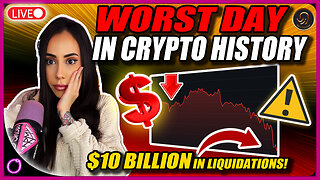 37:33
37:33
CryptoWendyO
2 hours ago $0.47 earnedWORST DAY IN CRYPTO HISTORY $10 Billion in Liquidations!
5.65K7 -
 57:01
57:01
PMG
3 hours agoHannah Faulkner and Dr. Bryan Ardis | Don't Fall For the Bird Flu!!!
5.99K -
 1:18:00
1:18:00
Russell Brand
1 day agoUFOs, Whistleblowers, and Government Lies – The Truth with Jeremy Corbell – SF530
174K68 -
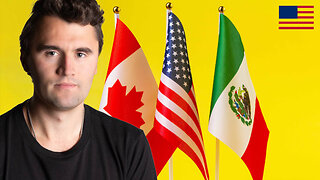 1:57:47
1:57:47
The Charlie Kirk Show
4 hours agoThe Most Beautiful Word in English + Confirm Tulsi! | Navarro, McCain, Posobiec | 2.3.2025
169K51 -
 1:13:03
1:13:03
Michael Franzese
4 hours agoRATING Trump’s First Two Weeks In Office
43.4K22 -
 1:43:17
1:43:17
Benny Johnson
5 hours agoBREAKING: Mexico SURRENDERS To Trump, Locks Down Border | Mass FBI Firings, Deep State PURGE in DC
96.6K145 -
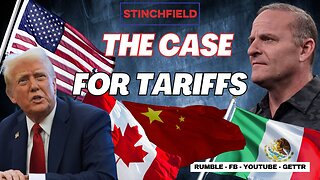 1:01:48
1:01:48
Grant Stinchfield
4 hours ago $4.93 earnedTrump's Tariffs are Already Working... Here's Why...
38.5K12 -
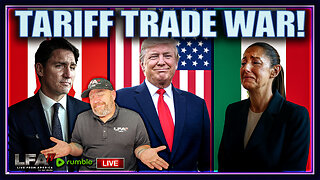 2:02:48
2:02:48
LFA TV
1 day agoTARIFF TRADE WAR! | LIVE FROM AMERICA 2.3.25 11am
80.1K68 -
 2:51:57
2:51:57
The Dana Show with Dana Loesch
4 hours agoTRUMP IMPOSES TARIFFS ON IMPORTS FROM CANADA, CHINA & MEXICO | The Dana Show LIVE On Rumble!
31.6K4